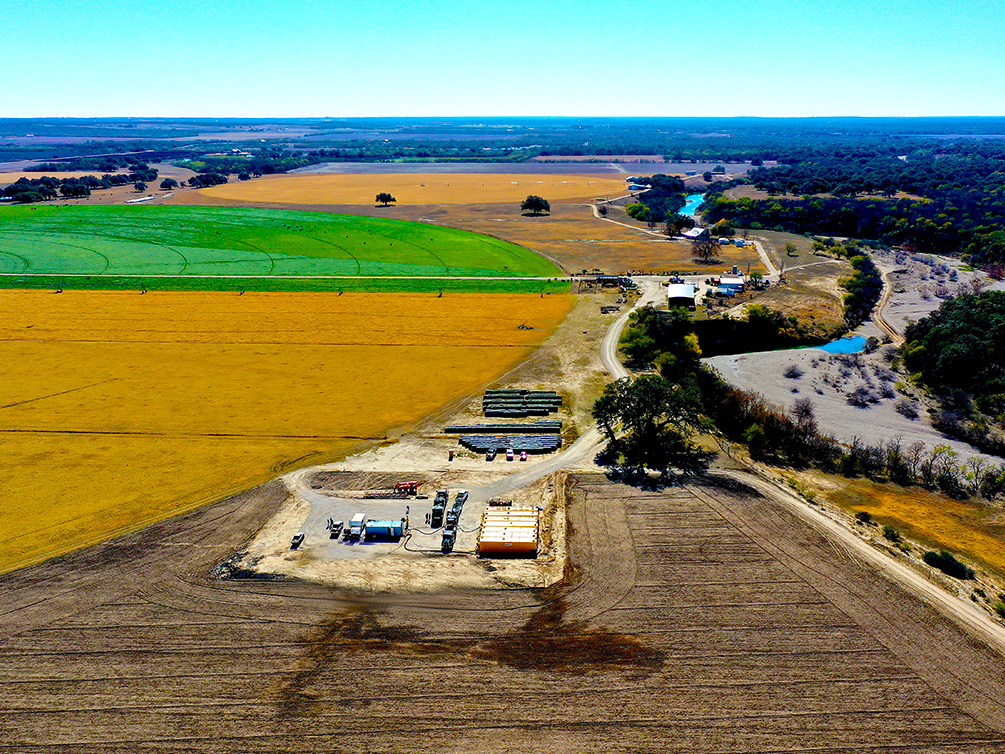Project Title: Catalyzing Commercialization of Geomechanical Pumped Storage
Location: Houston, TX
Award Amount: $10,000,000

Challenge
An estimated 460 GW of long-duration energy storage is needed for the United States to reach net zero, but there are many limitations among the prevailing technologies, and few can scale up to the degree needed for the energy transition. While lithium-ion batteries are popular, their short-term storage capacity becomes cost-inefficient at a certain scale, and they’re subject to the risks of supply chain bottlenecks. Pumped hydropower, the dominant option for long-duration energy storage (LDES), can be exceedingly expensive and requires unique mountainous terrain to deploy. By comparison, Quidnet’s LDES technology relies on naturally abundant rock and existing drilling technologies to circumvent the restrictions of traditional pumped hydro. Our modular geomechanical energy storage can be implemented at a fraction of the cost of other technologies and is scalable to meet the enormous needs of the energy transition.
Technical Approach
With our modular geomechanical energy storage, we drill beneath the earth and create a water reservoir that sits under the weight of up to a trillion pounds of rock. At times of high energy generation, we “charge” our sites by pumping water into a subsurface reservoir. When electricity is needed, the wellhead is opened, and the immense weight of the rock propels the pressurized water back to the surface with enough force to spin electricity-generating turbines. Pumped hydro requires mountainous terrain and years-long timelines, which are barriers to timely deployment and affordability. In contrast, our modular geomechanical energy storage is broadly suitable across 75% of North America’s land mass. Quidnet’s scalable and cost-effective technology also helps to support local economies in several ways. We utilize existing wells, breathing new life into obsolete installations, and redirect the expertise of displaced fossil fuel workers toward building and operating modular geomechanical energy storage systems, supporting job growth.
Quidnet is using ARPA-E funding to bring our modular geomechanical energy storage to market and launch more sites. The funding will support our first commercial development in San Antonio, Texas, anchored by the largest municipal utility in the U.S., CPS Energy. We’ll also use ARPA-E funding to explore opportunities for continued commercialization and scaling of our technology, and to continue building a team dedicated to transforming the nation’s energy infrastructure.
Team
Quidnet consists of a team that brings significant expertise in subsurface technology development and the development and execution of infrastructure-scale energy projects—a purpose-built team for commercializing geomechanical energy storage. Our leadership team is composed of veteran drillers at the forefront of the shale revolution, entrepreneurs with commercial experience in global energy storage markets, seasoned engineers specializing in subsurface technologies, and experienced capital allocators in the resource development domain. These same skill sets are reflected across our broader team, encompassing a group of highly skilled and passionate individuals based out of Houston, Texas—the nation’s energy capital. We are further supported by a Board of diverse investors and hard-tech entrepreneurs who have successfully innovated and commercialized technologies across various heavy industries. Taken altogether, Quidnet holds a distinctive position to navigate and lead within this technological field.
ARPA-E Mission Alignment
Quidnet’s modular geomechanical energy storage builds upon the existing U.S. drilling industry, making it possible to scale up storage production at an accelerated pace in order to meet current and future domestic clean energy and energy security needs. By drawing on existing U.S. industrial strengths, our storage solution can provide much-needed resiliency for the grid while using resources and capabilities that are already domestically available and shielded from global supply chain bottlenecks, shifting geopolitics, and reliance on foreign resources. Together with its widespread deployment potential across the country, geomechanical energy storage provides a pathway for broad-based economic development and workforce participation in the energy transition.
